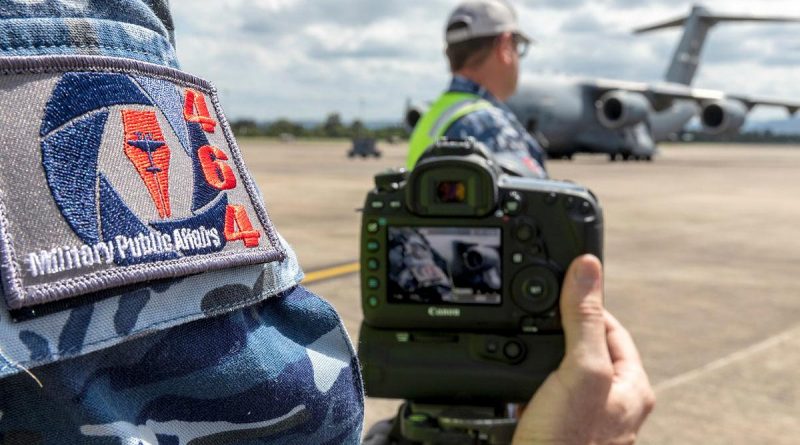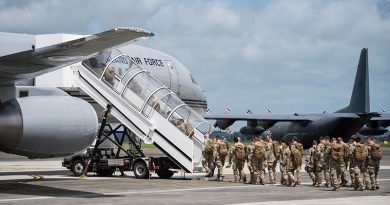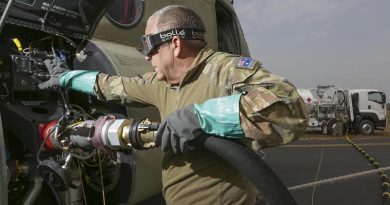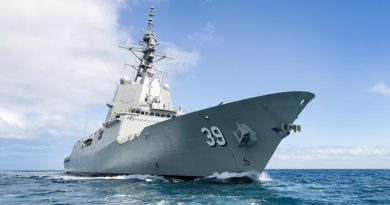A glimpse inside RAAF photography

Capturing the realities of war took a leap forward with the invention of photography in the 1800s.
CAPTION: Royal Australian Air Force imagery specialists, from No. 464 Squadron, take imagery at RAAF Base Richmond. Story by Leading Seaman Kylie Jagiello. Photo by Corporal Dan Pinhorn.
Conflicts involving Australian servicemen and women were first covered by war correspondents, such as Charles Bean, among others.
As Australia’s first official war historian and correspondent, he went ashore during the Gallipoli landings, photographing the events and landscape.
However, the Australian record of Gallipoli is largely constructed of images taken privately by soldiers.
It wasn’t until 1941 when the RAAF’s first photographic unit began as a flight at Point Cook, re-roled as a survey flight two years later, and then transferred to East Sale in 1946, becoming a photographic school in 1952.
Students were instructed in basic photography, chemistry, optics, processing and photographic equipment.
While the importance of good aerial imagery was established during WWI, it took until 1945 to establish the Central Photographic Unit that was re-raised in 1949 as the Central Photographic Establishment.
They produced aerial imagery for all three services before, during and after most major manoeuvres.
The Central Photographic Establishment went on a 48-hour shift to produce 300 enlargements of the devastated Darwin area following Cyclone Tracy, which were used in clearing and rebuilding the city.
In 1975, Navy personnel attended the basic photographic course, and in 1978 the first course was held with female students.
Construction of a new photography school commenced in 1986, more than 15 years after the original approval.
Following a review of RAAF’s photographer mustering in 2010, the photography school was closed at the end of 2013.
With 23 years’ experience as a Royal Australian Air Force photographer, Sergeant Rodney Welch knew little about photography when he transferred into the mustering.
“It was an eye-opener to the whole optics – learning physics, camera equipment and taking photos,” Sergeant Welch said.
“The different techniques we learnt made me stop and open my eyes to what was around in nature and look at things compositionally.”
While on his initial course, Sergeant Welch entered three images in the photography course competition and came away with first and second place.
“With nine students each submitting three photos, I wasn’t expecting to win as I felt there were better photographers,” he said.
“But I knew I was now a photographer.”
The most famous Australian war photographer was arguably Damien Parer, who was the first official Australian photographer of WWII.
He was killed by Japanese machine-gun fire in 1944, covering American operations in the Palau archipelago.
During the Iraq war from 2003 to 2009, 36 civilian photographers and camera operators were abducted or killed.
One of Australia’s most respected combat cameramen, Neil Davis, covered conflicts in South-East Asia area for 20 years, including the war in Vietnam.
During a coup in Bangkok, Davis was killed by shrapnel and his camera filmed his death.
As part of the 1st Joint Public Affairs Unit, Sergeant Welch deployed to Afghanistan in 2007.
“We would go on patrol outside the wire with the Army through villages, taking photos and videos,” he said.
“Sometimes you would wonder if it was your last day because of the IEDs everywhere.
“When I got home, I reminded my daughters how lucky we were and to be thankful for the country we lived in.”
Charles Bean said photographs performed a vital function in the national memory of war.
“The history of the Australian race will be preserved and illustrated within it,” he said.
.
.

.
.






I remember Ken Farrow and others at Billsville Circa 75. He was a Plotter before remustering. I believe Ken became a faded echo last year . . . a Larikn through and through one of a kind and funny guy to boot. RIP Kenny Ol’ Mate
I worked with Ken at 6SQN PPIF 86-89 (AMB)
He was good value, serious when he had to be and no so most of the time.
His moustache was legendary 🙂
In 1952 I was a Nasho in 87 Photo Recon Sqn based at Fairburn ACT, being an instrument fitters tech assistant the cameras were part of our job on the Mosquitos used by the Sqn, unfortunately we were not doing photography work at the time but I remember the great big cameras that were fitted to our kites and the photos were all black and white, very interesting times.
If the Photographic school was closed in 2013, was it replaced by some other school or course?
From what I understand, they do it via TAFE in Sydney now. Staying at Garden Island.
There haven’t been any courses for a number of years.
But in 2020 they ran the latest intake (4 students I think)
When I joined in 85 there were 168 RAAF Photog’s, when I left in 98 there were 129 approx.
Now there are less than 50 from all services combined.
I forgot to say I was a RAAF Photographer.
It was 5 days after my father’s 18th birthday, Jeff “Jerry\Gerry” Sebastian join the RAAF following in the footsteps of 4 siblings. Soon after basic training and working as a Steward he transferred into the Photographic School. In the early ’50’s he went with 78 Wing to Malta as photographer for 3 years, went to Korea with the UN, got married in ’59 and moved to Russell Hill, Canberra. There was many trips that followed, Malaysia, Singapore, Vietnam, many trips with Prime Minister’s, USA President LBJ, Cyclone Tracy, even took a Murray Grey bull to China for PM Whitlam and many others. He retired one day before his 65th birthday after 47 years service essentially in the same discipline moving from induction to Director of Photographery for the Defence Dept. He was a humble photographer that took extreme pride in his work, mentored many other great photographers whom followed. The RAAF and photography provided my father a fulfilling work life and as his son I’m very proud of what he achieved.